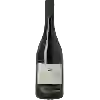
Domaine du Bel AirLes Perrières Bourgueil
This wine generally goes well with
Details and technical informations about Domaine du Bel Air's Les Perrières Bourgueil.
Discover the grape variety: Vidoc
A wine grape variety of the INRA-Resdur1 series with polygenic resistance (two genes for mildew and powdery mildew have been identified) resulting from an interspecific cross between Mtp 3082-1-42 (one of its parents is Vitis rotundifolia, which is resistant to Pierce's disease, mildew, grey rot, etc.) and Regent. The parents of Artaban are the same. Little multiplied, it is registered in the Official Catalogue of wine grape varieties list A1.
Last vintages of this wine
The best vintages of Les Perrières Bourgueil from Domaine du Bel Air are 2011
Informations about the Domaine du Bel Air
The Domaine du Bel Air is one of of the world's greatest estates. It offers 9 wines for sale in the of Bourgueil to come and discover on site or to buy online.
The wine region of Bourgueil
The wine region of Bourgueil is located in the region of Touraine of Loire Valley of France. Wineries and vineyards like the Domaine du Bel Air or the Domaine de la Chevalerie produce mainly wines red, pink and white. The most planted grape varieties in the region of Bourgueil are Cabernet franc, Cabernet-Sauvignon and Pinot noir, they are then used in wines in blends or as a single variety. On the nose of Bourgueil often reveals types of flavors of red fruit, toasty or red currant and sometimes also flavors of cocoa, green bell pepper or tropical fruit.
The wine region of Loire Valley
The Loire Valley is a key wine region in western France. It follows the course of the Loire River on its Long journey through the heart of France, from the inland hills of the Auvergne to the plains of the French Atlantic coast near Nantes (Muscadet country). Important in terms of quantity and quality, the region produces large quantities (about 4 million h/l each year) of everyday wines, as well as some of France's greatest wines. Diversity is another of the region's major assets; the styles of wine produced here range from the light, tangy Muscadet to the Sweet, honeyed Bonnezeaux, the Sparkling whites of Vouvray and the juicy, Tannic reds of Chinon and Saumur.
The word of the wine: Breaking
Accident (oxidation or reduction) causing a loss of limpidity of the wine.














